Over the weekend of the 26-28 May there will be a chance to see sketches and drawings, never shown before, by the late celebrated painter, John Ward (1917-2007) at Challock Church, near Faversham.
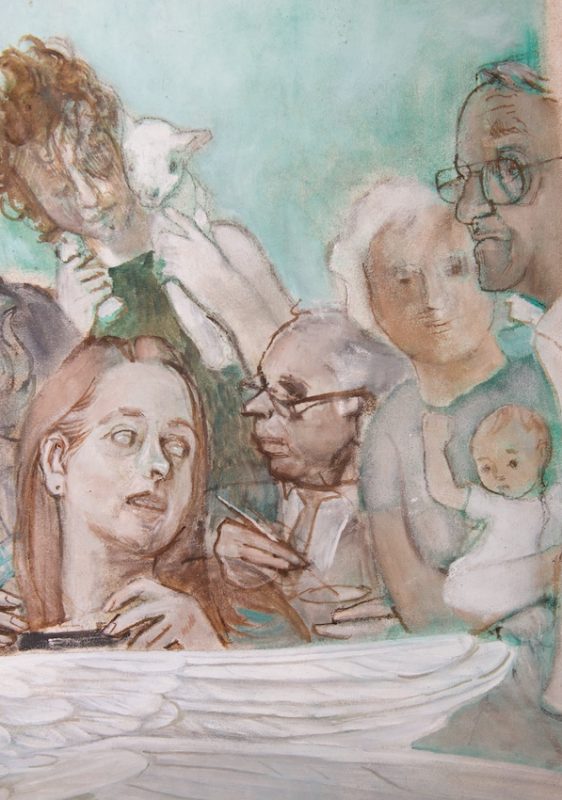
The bespectacled man is a self-portrait by John Ward
Described as ‘an establishment painter par excellence’ in The Daily Telegraph’s obituary, Ward painted many portraits of the great and good in his long career, as well as the christenings of the two Royal Princes, and gave sketching lessons to Prince Charles.
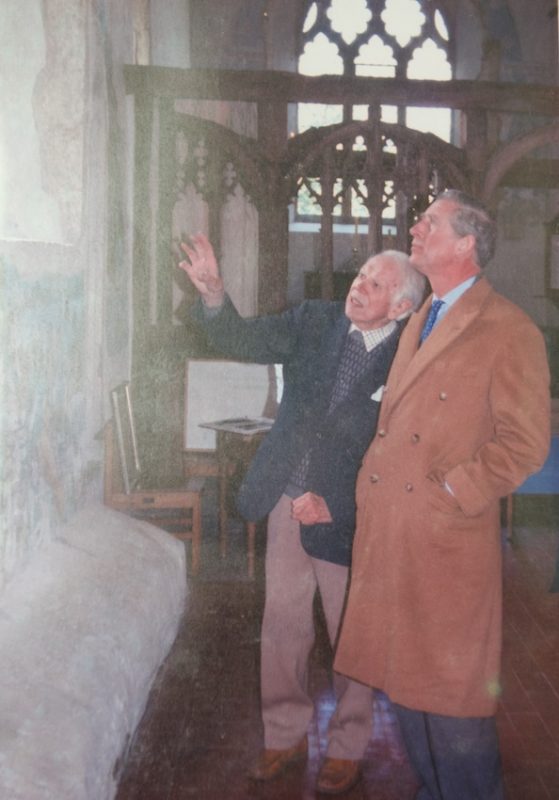
John Ward showing his mural to Prince Charles
Organised by his son William, this is a belated centenary exhibition: ‘When my father died he left some 2,000 pictures, oils, watercolours and pencil drawings. It is a hell of a job – my five siblings and I are still sorting through them.’ William describes the exhibition as a ‘portrait of a painter’, exploring all facets of his long career, even including an unexpected brief flirtation with Vorticism. He studied at the Royal College of Art, but on the outbreak of war enlisted in the Royal Engineers on the strength of having done architectural drawings at the RCA. This qualified him to design and construct pillboxes along the Kent coast.
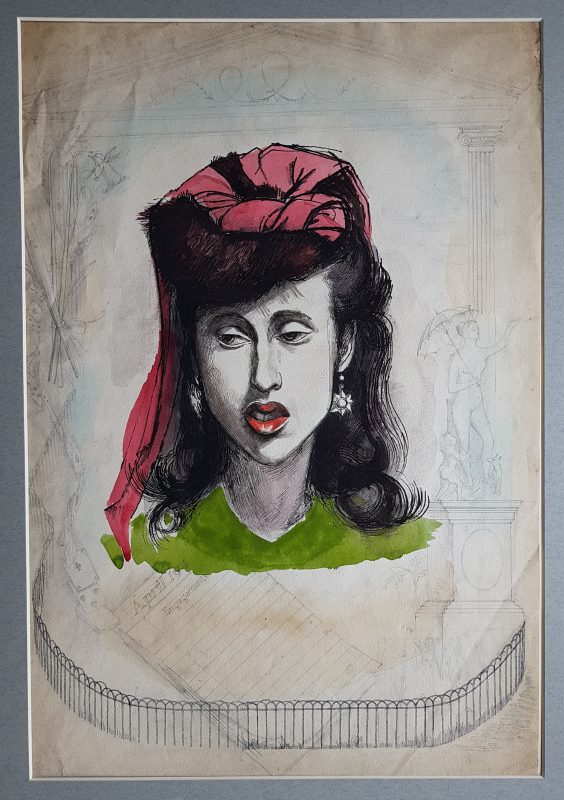
John Ward was responsible for ‘changing fashion drawings’
After the war, he worked as an illustrator on county guides and notably on Laurie Lee’s Cider with Rosie first published in 1959. In due course this led to a contract with Vogue from 1948-1952. He loved what he called ‘the style and nonsense of it all’. He was responsible for ‘changing fashion drawings,’ explains William. Before him, fashion drawing were stark depictions of models. He changed all this by incorporating a background, setting the models in context. His drawings brilliantly convey the social atmosphere of the period.
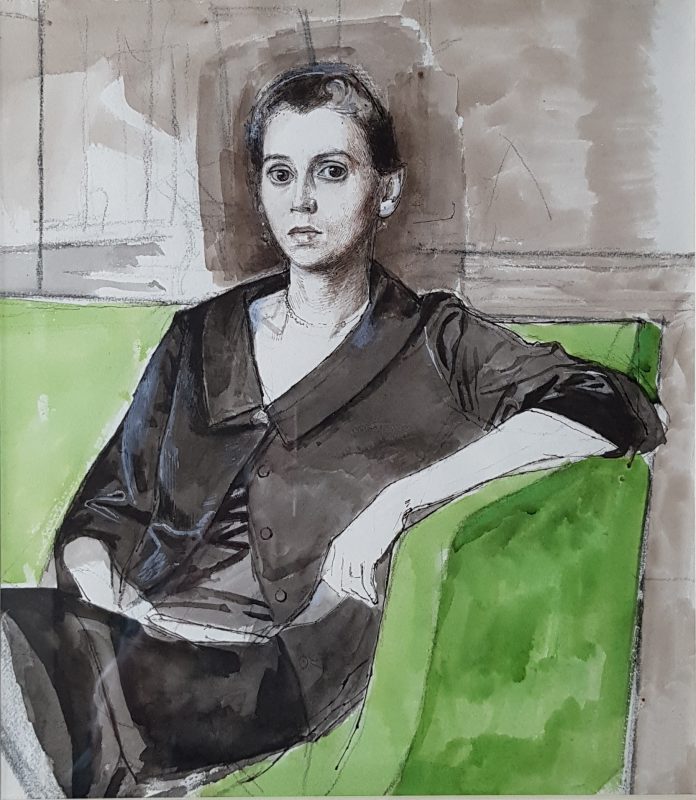
A portrait of Christobel Rieu, wife of an erstwhile Headmaster of Simon Langton Boys Grammar School, Canterbury, by John Ward
‘My father was no good at caricatures, but he could make a lightning sketch of anyone amusing.’
Perhaps John Ward’s most beguiling commissions are the two murals that adorn the interior of Challock Church.
The flint church, dedicated to St Cosmas and St Damian, stands in a clearing some way from the village. It suffered extensive damage during WWII but was successfully rebuilt.
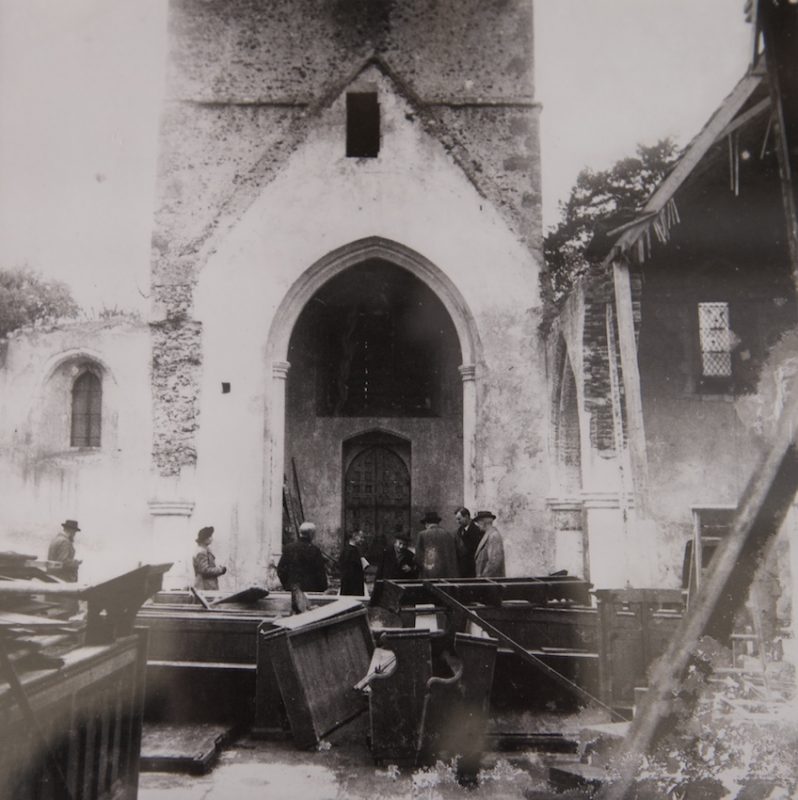
Less than 100 years ago but it all seems so remote now
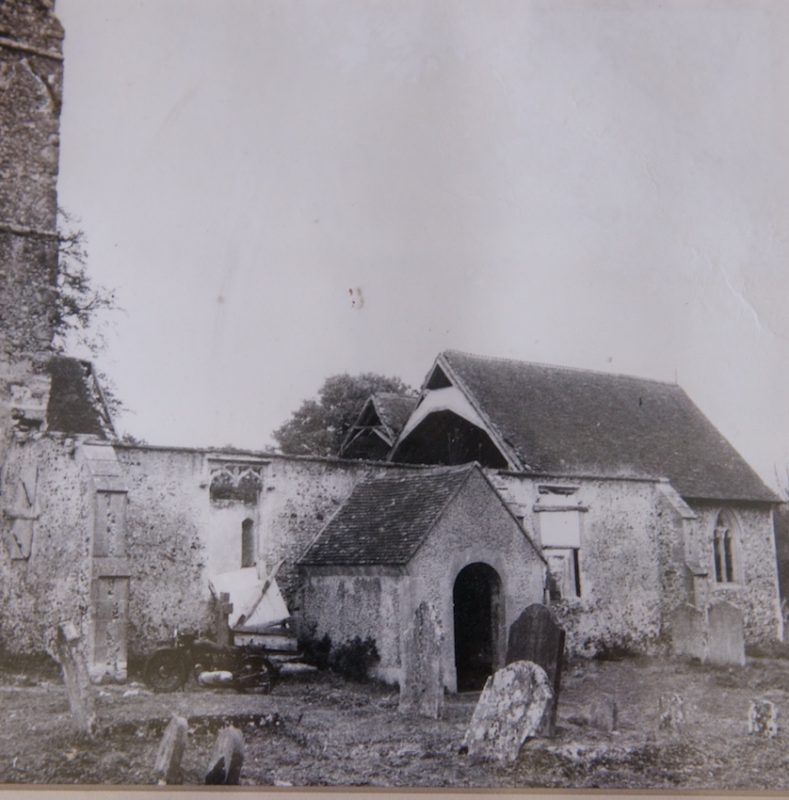
An old photograph showing the extensive WII damage
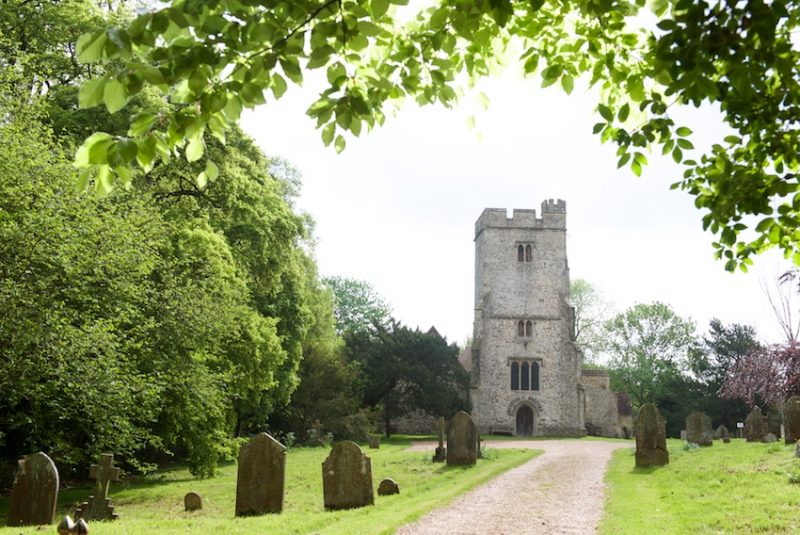
St Cosmas and St Damian Church at Challock today
It is a thrilling experience to open the door and see the 18ft-long mural. On close inspection, the initial impression is confirmed. Here is a remarkable achievement that deserves recognition.
The scene depicted shows Christ riding into Jerusalem, which is painted as Challock and its community. Gordon Davies was responsible for the still lifes and John Ward the rest. Remarkably the same partnership was responsible for a set of murals executed nearly half a century earlier, in 1956, on the walls of the chancel. The subject is the life of Christ.

Christ riding into Jerusalem
John and Gordon met in the army at the end of the war. While painting the 1956 murals they lived for a time in the old sexton’s hut in the churchyard, without electricity or water.
It was a churchwarden, the late Puff Miller Thomas, who had the inspired idea to commission another mural for the millennium. She asked John, who lived nearby in Bilting, whom he would recommend. Happily, he suggested himself. ‘I couldn’t bear not to do it,’ he said at the time, adding ‘I know how important these works of art are to a community. There is no doubt that murals like these unite the generations in a unique way.’
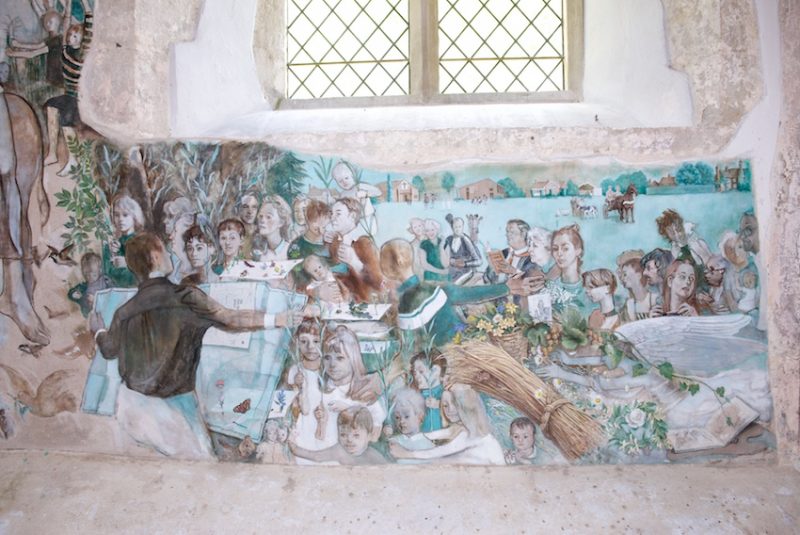
A section of the mural painted by John Ward and Gordon Davies to commemorate the Millenium at Challock Church
Fundraising for the mural was ingeniously devised to get as many people involved as possible. All the parishioners were invited to sponsor it and in return, they could have relatives, friends, plants, birds or even a teddy bear immortalised. Some people contributed £1,000, others £10, adding up to a grand total of £17,000.
There are many touching individual stories behind the mural. Puff’s son, Vyvyan, who was killed in a road accident, is depicted. A young gardener worked for Puff at the time for nothing so that his mother could be included. And a painting of a tiny blue butterfly was paid for by a woman whose daughter had recently died from a heart defect.
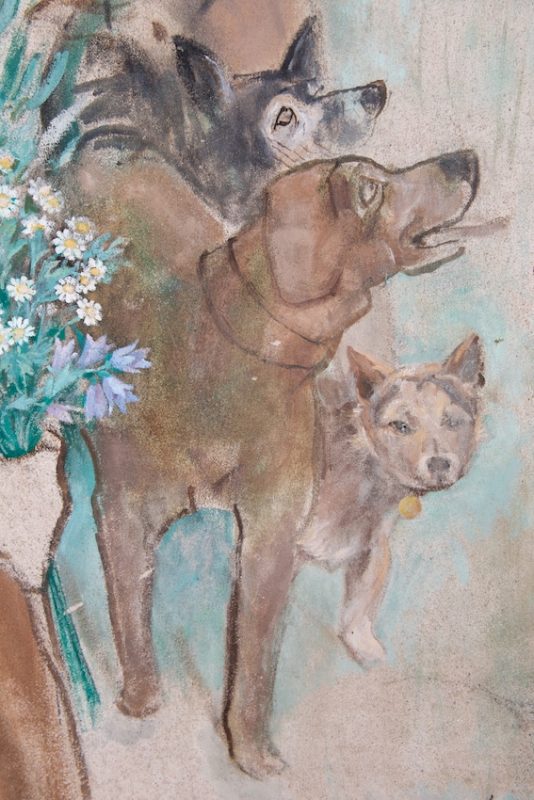
Two dogs for ever immortalised in John Ward and Gordon Davies mural at Challock Church
Also included in the mural are various local details, such as the tree and plant stall for the annual goose fair, a group of villagers looking at a map of the annual five-church walk and the insignia of the village school. Farmers are represented by a sheaf of wheat. Brewers are symbolised by hops. There are numerous other charming details: a cat peeks out from under a tablecloth; a wren has made its nest under the lectern; there are Woods Ware green teacups and saucers which are only found in English churches or village halls. The mural is an enchanting record of English village life at the close of the 20th century.

A quintessential English village summer scene
John decided at the outset that the mural should be largely monochromatic, so as not to distract the eye from the pale woodwork and the white painted walls. The interior of the church is strongly reminiscent of those airy East Anglian churches. The restrained colour palette of viridian green, burnt umber and charcoal allows the mural to blend harmoniously into it surroundings.
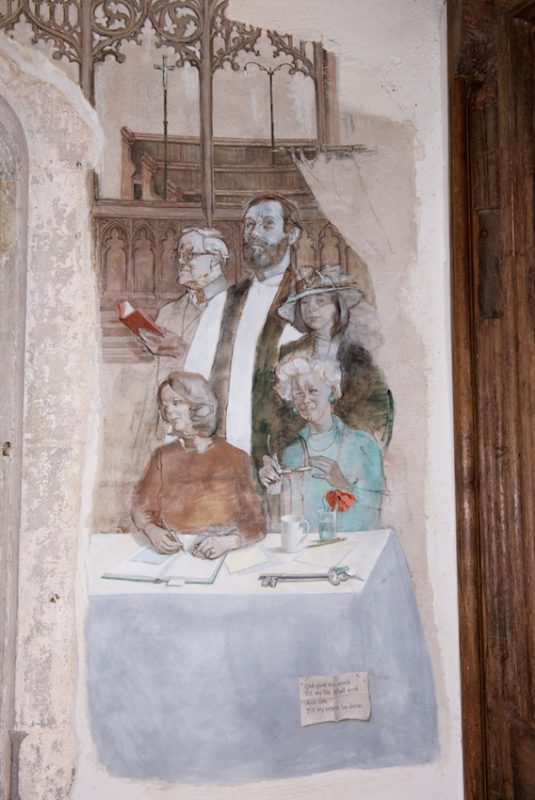
The late Puff Miller Thomas, whose idea the mural was, sits on the left next to the vicar’s wife who loved to wear hats
The design took a year to complete. It then had to be approved by the diocesan authority. ‘What will people think of it in 300 years’ time?’ muses Vyvyan Harmsworth, Puff’s brother. ‘I have no doubt that they will find it as enchanting as any visitor does today. As John is recorded saying ‘It’s given villagers a little bit of immortality, a chance to “speak” to other generations after they themselves have died.’’
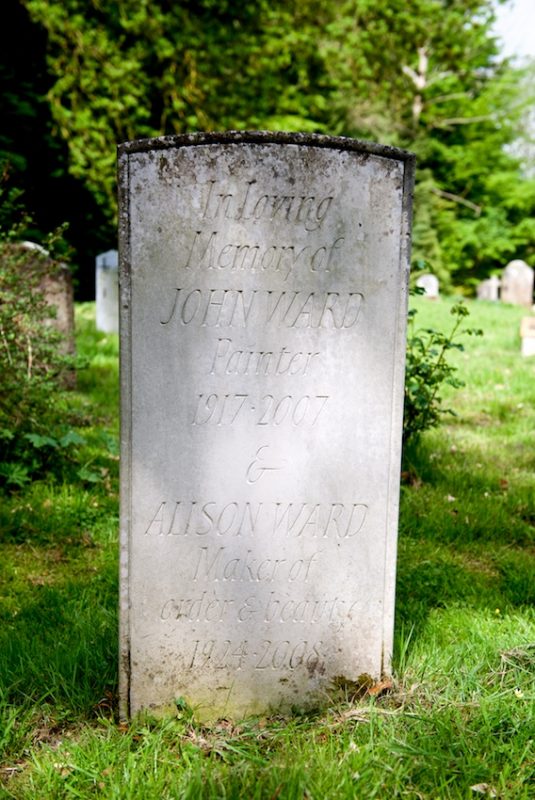
Poignantly, John, Gordon and Puff all lie side by side in the churchyard.
The church will be open daily on 26-28 May from 10.30-5pm.
Text: Amicia. Photographs: Lisa